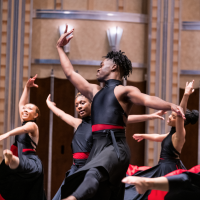No, this isn’t about lakefront preservation. It’s about the arts. It’s about how Cleveland’s cultural community must venture into uncharted waters to find the new and next generation of individuals needed to maintain our remarkable cultural sector’s strength and excellence.
On June 6, the Community Partnership for Arts and Culture (CPAC) hosted a remarkable symposium, “Audience Matters,” at IdeaCenter. More than 100 members of the cultural community, including people from Akron and Lorain County, heard speakers talk about the way the arts must change in order to attract and serve a broader constituency – one that is younger, more diverse, and representative of people who have lived their lives without seeing the arts as an important part of what makes those lives worth living.
These people have an unprecedented wealth of entertainment options vying for their time, attention, and dollars. These people have been immersed in technology that has given them opportunities to create work themselves – in their own time, and at low or no cost. These people want to be part of the picture – not just someone looking at a picture.
The Cleveland Foundation has been talking about the huge demographic shift facing the arts for some time now (read my op-ed on this topic from the Plain Dealer), so we were very pleased to see CPAC offer this rich experience for the sector.
In taking up the challenge ahead, the symposium’s keynote speaker, Richard Evans, declared that the arts faced “a shock wave of both enormous potential and organizational disruption.” He chronicled the shifts that have already taken place, from the traditional model of professional artistic excellence and limited/elite availability to a new framework for creative work that recognized the professional amateur and the vast abundance of work these individuals produce outside of the institutional framework.
He suggested the arts sector needed to move from being a provider of services to an enabler of participation and direct experience. And the arts must become more porous — open and responsive to its community. He called this a capacity for “dynamic adaptability” and said it meant having a high tolerance for taking risks. And to do this, the arts will need to restructure their financial models to make room for risk capital, working capital, and flexible resources that allow for rapid responses to opportunities and new ideas.
After the keynote, a series of case studies were presented that offered models of this dynamic adaptability from other cities. Charlie Miller from the Denver Theatre Centre urged the symposium participants “Don’t do what you think your audiences want. Do what you think is awesome!” And he showed how that has worked for them. Sarah Lutman, CEO of the St. Paul Chamber Orchestra, talked about how the orchestra has dramatically reduced marketing costs while dramatically growing attendance by bonding the marketing and development departments. Renee Baldocchi of the de Young Museum in San Francisco bravely chronicled the almost guerrilla-like efforts of the program department to move interactive audience programming directly into the galleries, and its efforts to partner with dramatically nontraditional external organizations to make friends with people who had never visited the museum.
Finally, the very engaging Andy Goodman gave the whole group a hands-on primer on how to tell a good story and provided compelling data on why storytelling is the most effective marketing tool any organization possesses.
Watch this blog in the coming months for more on how the arts must change to engage a far broader and more diverse constituency that they have been comfortable with in the past.
* “One doesn’t discover new lands without consenting to lose sight of the shore.” André Gide



Just read in the PD today about the awards. Yea!
Can you speak more on ‘Engaging the Future?’ Any specifics yet?
I’d really like to see some events/programs/happenings brought into the neighborhoods you’re concerned about. Because they may not come to you first. And make it very public and free or cheap (like Parade the Circle and Ingenuity Fest.)
Gotta hook ’em before you reel them in!
;-)